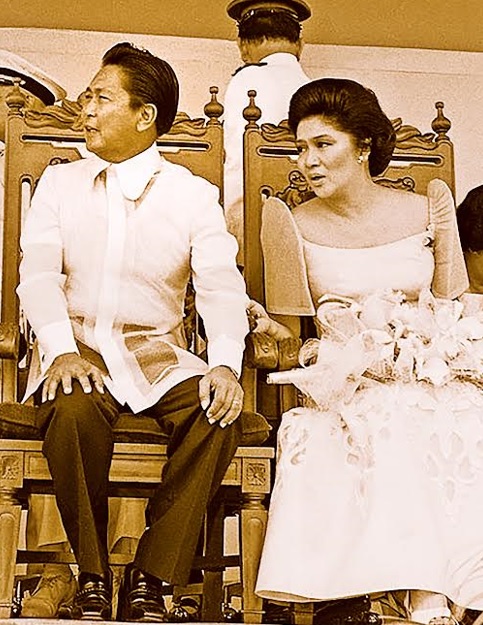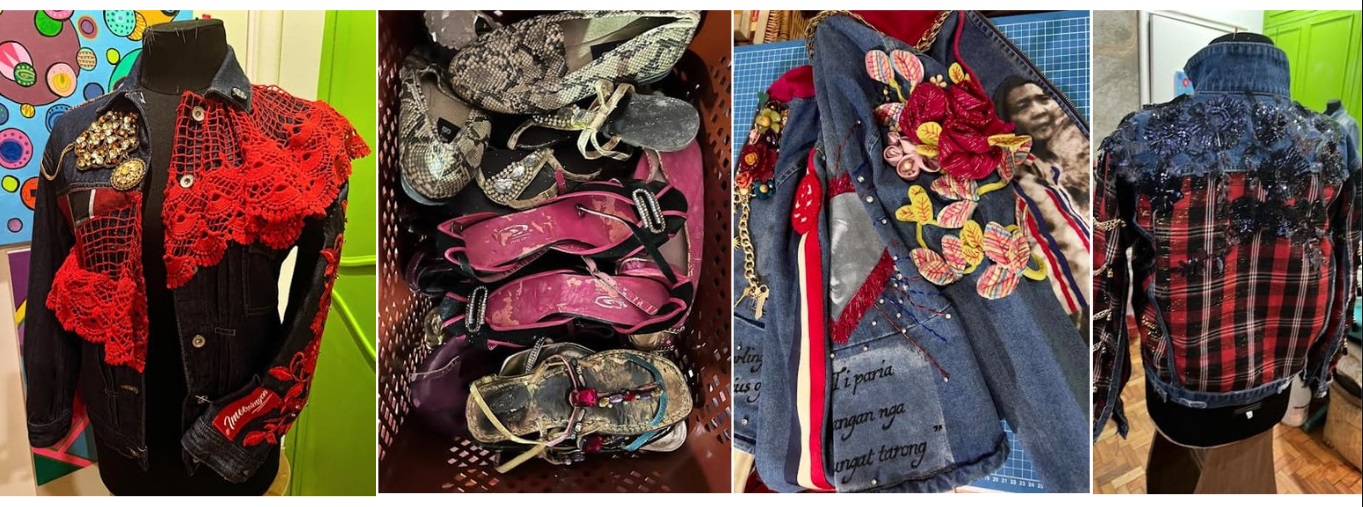Why Imelda Marcos is the standard for First Ladies
Being a good First Lady is not just about achievements
Of late I have been preoccupied with two things. One, embellishing jean jackets with cannibalized decorative elements found in ukay-ukay finds and on the other my aunt, the former first lady Imelda Romualdez Marcos (IRM), more specifically her role and achievements as First Lady (1965-1983).
A few months ago, having discovered my knack for embellishing materials from what some people would consider junk, a cousin asked if I could embellish some bags for her. I suppose she was very pleased with the results that a few weeks back, she asked if I could embellish jean jackets, vests, T-shirts, etc. for her shows on social media.
For the past month, I have been oscillating between embellishing clothing and my current and post-pandemic passion for recording and digitizing documentation of the legacy of IRM and her late husband President Ferdinand E. Marcos (PFEM). Work on hand happens to be on the accomplishments, thoughts, and ideas of IRM. In the process, I have learned so much more about IRM, not just as my aunt but as First Lady of the Republic of the Philippines—the nation’s titular woman and mother as well as the partner of the leader of the nation then the late President Ferdinand E. Marcos.

IRM was a perfect complement to PFEM’s efforts to move the nation to progress. In Ileana Maramag’s “Portrait of A First Lady with Vision: Imelda Romualdez Marcos,” she wrote, “While the President concerned himself with effective action programs as the necessary overhead for the country’s progress, Mrs. Marcos dedicated herself to compassionate programs geared toward improving the wellbeing of the people.”
Just to list a few, IRM was behind the Population Center, Nutrition Center, Ecology Center, Pasig River Development Project, Asian Center in Social Welfare, Heart Center, Lung Center, Philippine Medical Research Center, Design Center, Rural Electrification, Tondo Urban Development, Bagong Anyo, Green Revolution, Palayan ng Bayan, Asian Handicraft Center, Nayong Pilipino, Ehtnic Groups, Museum of Traditional Cultures, National Council for the Rehabilitation of Displaced Persons in Muslim Mindanao, Cultural Center of the Philippines, Folk Arts Theater, Kasaysayan ng Lahi, Igkas Kayumanggi, Young Artists Development Foundation, National Artists Award, National Arts Center, Preserving Our Heritage, National Museum, Beautification Program, Project Tulungan, Reception and Study Center and Nayon ng Kabataan, Marillac Home for Girls, Vicente Madrigal Training School for Boys, Golden Acres, Save a Life in Every Barrio, Lending A Helping Hand, Maligayang Pasko, Rizal Youth Development Foundation, and National Disaster Outreach programs just to name a few. The programs mentioned above are a testament to her temperament, vision, and leadership.
More importantly, I began to appreciate her as a woman epitomizing grace under fire and tact. Having immersed myself for the past years in the couple’s works just solidified my admiration for her compassion and commitment towards the upliftment of the Filipino people. Indeed, her compassion and commitment aided by her “acute sensitivity to social problems” have been said to be the underlying philosophy that guided IRM’s works for the public good when she was First Lady of the Republic.
The position is “not an elected position, carries no official duties, and has no personal remuneration. Nonetheless, the title holder participates in humanitarian and charitable work on behalf of the president, often in line with his or her policies and programs.”
But what is the role of the First Lady of the Republic of the Philippines? The constitution does not define the role of the First Lady but by virtue of being the spouse of the President of the Republic—whose duties and functions are outlined in the constitution, “public service is inherent to the role.”
Our understanding of the role of the First Lady of the Republic of the Philippines comes from literature and media coverage on the role of past Presidents of the Republic and the contribution of their respective wives during their husband’s administrations, past First Lady speeches, and other official documentation of the First Ladies’ schedule during their husband’s presidencies. Based on what is made available, the role of the First Lady is largely ceremonial and in line with the President’s national programs and advocacies unless more clearly defined by each Presidential couple.
And how should Presidential couples be guided?
In the book Imelda Romualdez Marcos: The Heart of the Revolution, Isabelo T. Crisostomo suggests that “Temperament helps decide First Lady’s role.”
Crisostomo elaborates, “A First Lady—and her husband—chooses her role. Would her role be active, or would it be passive? Would she share the limelight with her husband, or would she stay in the background, quietly giving him support? Would she be a plain housewife and mother of the President’s children, or be her husband’s partner, sharing with him the responsibilities and problems of the Presidency?” How powerful—or powerless—a First Lady could be, depends on the First Lady herself, and her husband. The first essential factor, it seems, is her nature and personality make-up.

But the vital factor that determines how influential or powerful a First Lady will be is the President himself; command after all belongs to him. It is the President who intimately knows the weaknesses and strengths of his wife, her assets and liabilities as a human person: it is also he who determines finally the role she will play.”
Once parameters are defined by the presidential couple, the role of the First Lady can proceed to take on the common aspects of her position. Based on the duties and responsibilities performed by past First Ladies of the Republic, the First Lady: provides behind-the-scenes support for the President (emotional and political adviser); represents not only her husband but the nation and its people; champions social and cultural initiatives, participates in charitable works, promotes Filipino culture, showcases Filipino fashion and style, hosts official events, advocates for policy changes and raises awareness for pressing social issues. Again, the manner and style in which her role is conducted will depend on the parameters the first couple delineated and the First Lady’s skills and temperament.
Speaking of parameters, the other matter that has been taking my time these past weeks is the embellishing of outfits for two weekly shows on social media for my cousin. My cousin (daughter of IRM) instructed me
1. To create outfits I would wear
2. Buy from ukay-ukay
3. Use old/used accessories (jewelry) and bits of fabric found in bodega (sewists and crafters will understand the reluctance to throw away scrap fabric in fear of needing them for future projects).
Even embellishments of worn-out shoes are not spared! Apparently, this hoarding of fabric and scraps for future upcycling projects is in the blood!
Realizing the treasure trove the ukay-ukay can offer—the variety and uniqueness of fabrics (you won’t be able to find them in Divisoria) and the embellishments on garments I found that I could reuse and repurpose costing just a few pesos per item, I messaged my cousin asap. Being a long-time believer in sustainable and avant-garde fashion, Manang Imee unsurprisingly replied, “‘Di ba, sustainable upcycling is the future of fashion. Aminin.”
Figures show that 92 million tons of garments are left unsold worldwide, not to mention the amount of clothing people throw away each year and end up in landfills. In the Philippines, 267,111 tons of textiles are dumped in our landfills annually.
Let’s do our bit to save our planet and support our local mananahi and other small-size enterprises by buying ukay-ukay! Have ukay-ukay finds altered, redesigned, recycled, and or upcycled. The mananahi can easily be found in our local public markets. They can redesign and alter for you. You can also go on social media for ideas.
Happy ukay-ukay shopping!